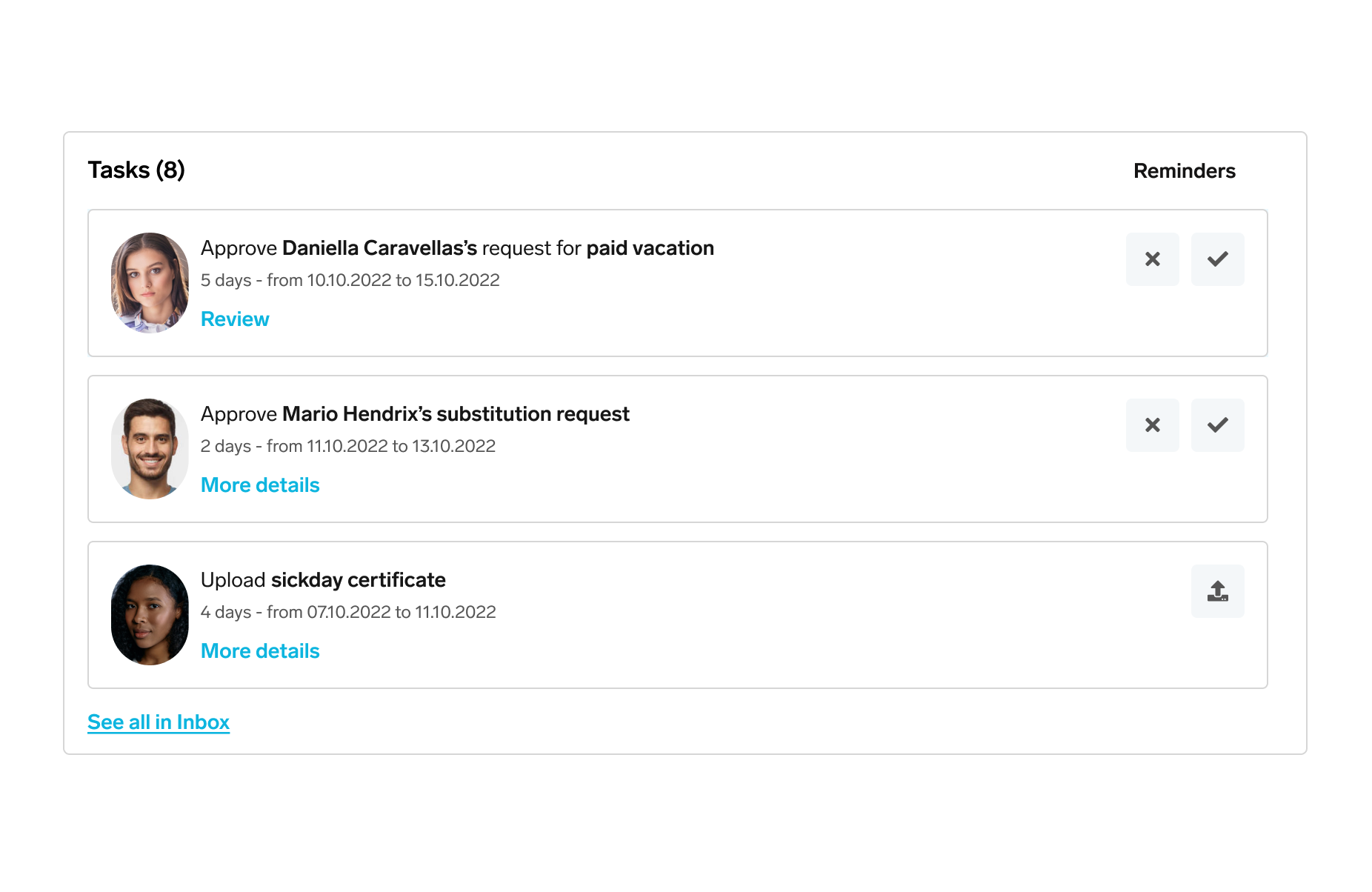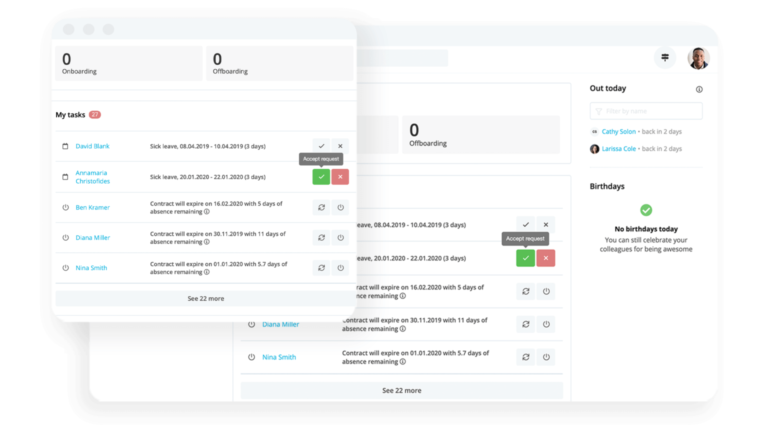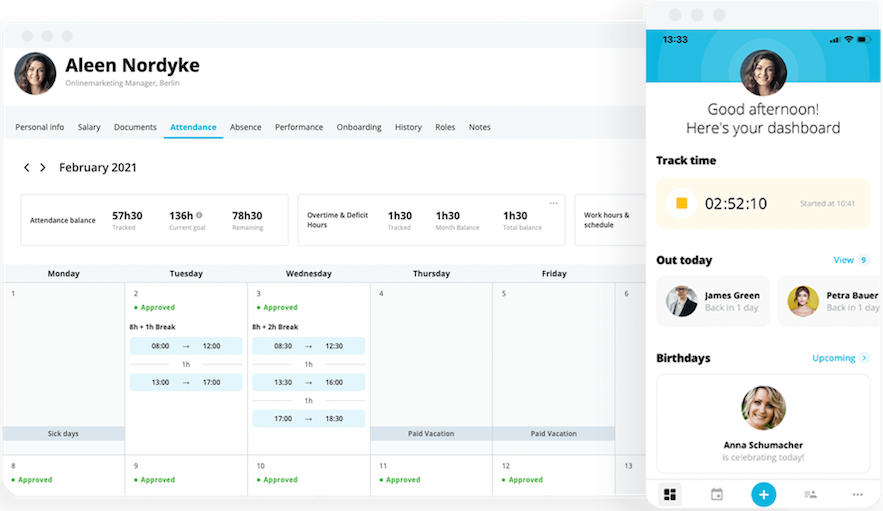Do You Need HR Shared Services?

Implementing an HR shared services model can save your entire organisation time, while giving employees and managers quick and easy access to the services they need. Read on for our full guide to HR shared services, including how the model works, the benefits and challenges involved, and some best practices for implementation.
Download our guide to get to the heart of the employee life cycle model.What Are HR Shared Services?
HR shared services relates to organising administrative and operational HR activities into a single centralised hub. In this model, a shared services team acts as a ‘business within a business’, providing employees and managers with the services they need to do their jobs
The idea behind shared services in HR is to allow employees to find answers to questions on their own as much as possible. This saves valuable time for HR teams, who often find themselves tied up answering the same questions multiple times a week.
To achieve this, most organisations take a multi-tiered approach to HR shared services, which allows employees to ‘self-serve’ information where possible, and only escalates questions to HR specialists when it’s truly needed.
Here’s how that works in practice:
Tier 0 | Tier 0 HR service delivery is when an employee accesses information or completes HR transactions on their own through a self-service intranet or application. This might include things like checking payslips, completing training exercises and submitting leave requests. According to a Gartner report from 2008, 66% of employee queries can be solved at this level. And with today’s modern, connected and accessible HR software, that figure could be even higher. |
Tier 1 | Any issues that can’t be resolved at Tier 0 are escalated to Tier 1, which is an HR shared services centre (SSC). This is a kind of helpdesk that employees can contact by phone, email, or even through workplace chat applications like Slack or Microsoft Teams. The SSC team has access to the same knowledge base as employees, as well as the employee’s personalised information. That means they can usually answer questions quickly, without the need for specialised HR knowledge. |
Tier 2 | When tasks or queries are more complex, they are escalated to Tier 2, where they are assigned to specialists in HR topics such as recruitment, payroll, performance management and benefits. Since the majority of queries can be handled at the lower tiers, Tier 2 experts have the time they need to quickly and effectively resolve the problems that are brought to them. |
Tier 3 | The final stage of escalation for HR issues is Tier 3 — although not all organisations need this tier. The problems that reach this stage are typically high-level, strategic and related to HR policy. |
What Is the Goal of HR Shared Services?
The goal of HR shared services is to make HR operations more efficient, saving organisations time and money in a number of ways.
First, HR teams typically spend a lot of time responding to basic queries from employees, which can be avoided by providing employees with self-service access to the information they need. HR shared services can also help to standardise HR processes, making operations more time and cost-efficient.
Plus, by ensuring as many issues as possible are resolved at Tier 0 or Tier 1, companies can reduce the need for highly specialised HR staff. This means they may be able to save on staffing costs in the long-term.
The Three-Legged Stool Model
HR shared services are usually just one part of a wider HR structure. One popular model for organising the HR function is the three-legged stool model, which was developed by an American academic called David Ulrich in the late ‘90s.
The model suggests that the HR function should be divided into three areas of expertise: shared services, centres of excellence, and strategic business partners. Shared services is a centralised service group that handles routine transactional services across the organisation. These days, it usually includes a self-service element, like an intranet or portal where employees can find information.
Centres of excellence are usually small groups of experienced HR professionals that work to create and implement best practices. They provide technical knowledge and support to various business units, as well as to shared services.
And strategic business partners are senior members of the HR team who work closely with the leaders of business units, and who are responsible for driving the company’s HR strategy.
HR Shared Services in Action: Example
The onboarding process is a moment in the employee journey when HR shared services can be particularly valuable. The right technology, coupled with a well-designed process, can help hiring managers easily onboard new employees — and help new starters quickly find their feet.
For example, you can use HR software (like Personio) to set up a consistent onboarding checklist for every new employee. Managers, new starters and HR can see an overview of everything that’s been done and that still needs to happen.
Of course, onboarding a new employee doesn’t just involve the HR team. Usually, IT will need to assign hardware, set up an email address, and provide access to any software the new employee needs. The legal team may need to draw up a contract and ensure it’s signed by the new employee.
Under an HR shared services model powered by the right software, you can create an automated process that automatically assigns these tasks to the right team whenever you’re onboarding a new employee. Your HR team will save time by not having to assign and follow up on these tasks manually, and your new hire will get a smooth and positive onboarding experience.
Benefits and Challenges of HR Shared Services
Here are some of the advantages and challenges of moving to an HR shared services model.
Benefit | Challenge |
|---|---|
Enables HR to play a more strategic role: HR shared services frees up time for senior HR professionals to spend on strategic initiatives like workforce planning or developing HR policy. | Retaining and engaging HR teams: Your HR team will likely see their roles change when you implement HR shared services — and you may struggle with retention and engagement. |
Brings significant cost-savings: HR shared services reduces HR admin time and drives process efficiency, as well as reducing the need for highly specialised HR staff. This can result in significant cost savings. | Building a business case for investing in HR technology: Implementing HR shared services requires a significant investment in technology, infrastructure, training and change management. You’ll need to build a business case that shows stakeholders the value HR shared services can bring. |
Improves consistency and compliance: Standardised HR processes help you ensure that you’re working in compliance with labour laws and any industry-specific regulations — reducing the risk of legal issues down the line. | Collating and integrating multiple data sources: HR shared services requires a single, reliable source of truth for employee data. But gathering information from multiple different platforms and repositories and then organising, categorising and storing it can be a challenge. |
Improves employee experience by empowering employees: When HR shared services work well, employees can quickly and easily find solutions to their problems — which reduces friction and improves the employee experience.
| Creating a high-quality digital experience: These days, most employees expect a consumer-grade experience, even from the tools they use at work. If the tools you provide don’t deliver on this promise, your employees might not use them. |
Makes HR processes more efficient: Implementing HR shared services involves standardising, simplifying and automating HR tasks and processes. This makes the whole HR function more efficient and provides employees with a smooth and easy HR experience. | Maintaining the human touch in HR: Shifting to a shared services model can make the experience of interacting with HR feel less human and authentic. It’s important to find the right balance between reducing HR workloads and maintaining a human touch. |
Three Best Practices for Implementing HR Shared Services
If you’re thinking of implementing HR shared services in your organisation, you should keep in mind that it will be a big change — both for your HR team and for your workforce as a whole.
Here are a few best practices to keep in mind to ensure the implementation process is as smooth as possible.
1. Address the Needs of the Existing HR Team
When you move to an HR shared services model, many people on your HR team will see their roles change. Make sure you reassure your team that their jobs are not at risk.
You’ll also need to provide training to ensure each employee has the skills and knowledge they’ll need in their new role. And you might want to conduct competency assessments to make sure each employee is well suited to their new role.
2. Track Performance and Adjust Processes As Needed
If you’re not tracking the right metrics, you won’t know whether your HR shared services model is meeting its goals. Before you make any changes, you should identify the metrics that will signify success, and then measure them continuously as you roll our your HR shared services programme.
For example, it’s a good idea to track the percentage of queries that are resolved at each tier of your shared services model. If too many issues are being escalated to HR experts, you might need to revisit the technology, training and infrastructure you’ve put in place.
3. Use the Right Technology
HR shared services starts with an online portal where employees and managers can go for self-service HR activities. And if you want your employees to use this service, you need to make sure it’s easy and pleasant to navigate. Embracing new technologies like AI chatbots can help to make the process even more intuitive.
Introducing Personio Conversations
Personio Conversations is a new feature from Personio, designed to change the way employees interact with their HR data and HR teams handle employee requests.
Employees can get instant answers to their questions from our AI chatbot, right within the platforms they already use, like Slack, Microsoft Teams or email.
And any issues that can’t be resolved by AI will be automatically forwarded to your HR helpdesk, where the team will be able to view everything from a central dashboard. They’ll prioritise tasks, assign them to the right people, and track them across different teams and systems — all within one platform.
Put simply, Personio Conversations provides employees with quick, reliable and friendly help with their problems — without putting extra work on your team. And from HR’s perspective, it means no more repeating yourself, keeping track of multiple channels or searching through cluttered inboxes.
Request a demo now to see Personio Conversations in action.

